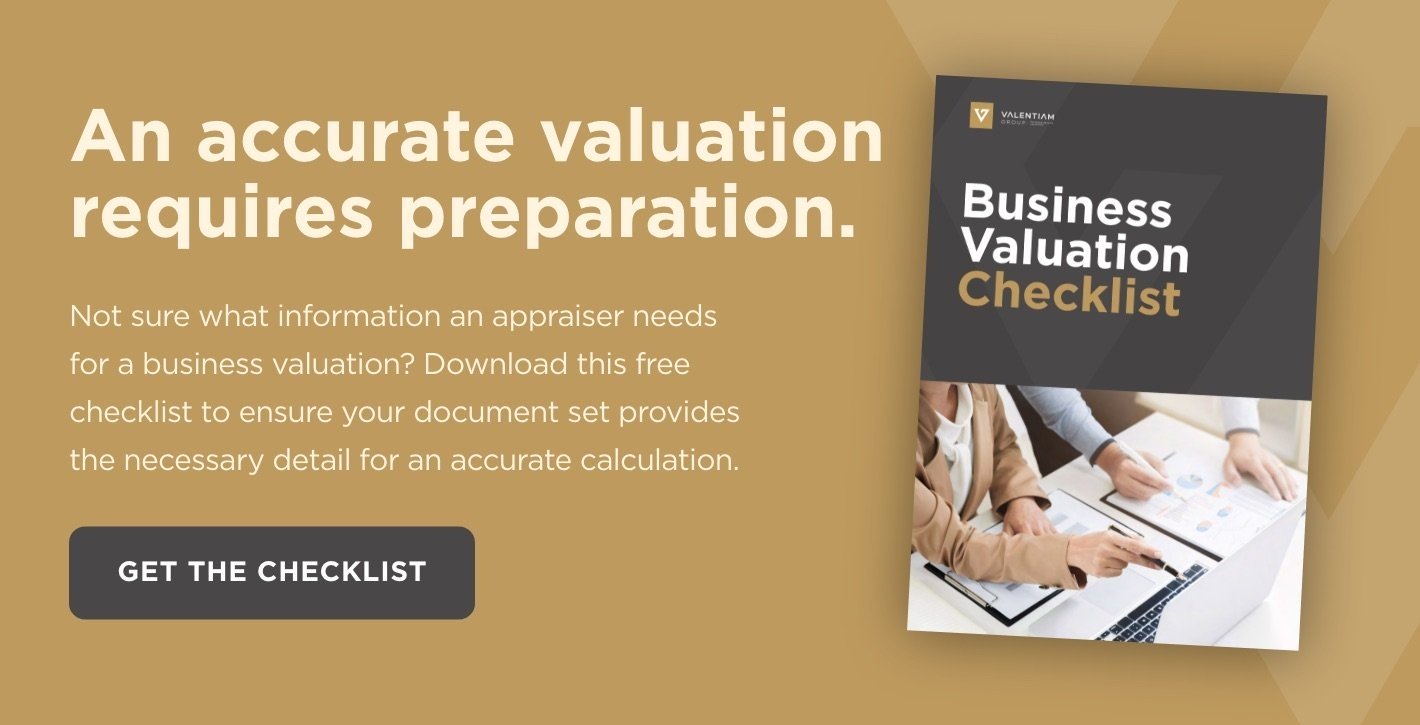ASC 805 Valuations: What You Need To Know
Posted by Valentiam Group on May 21, 2021

The Financial Accounting Standards Board (FASB) rule ASC 805 was adopted in 2015 for all subsequent fiscal years. ASC 805 governs accounting rules for mergers and acquisitions (M&A), specifically how tangible and intangible assets are handled on the balance sheet.
Under the rules, ASC 805 valuations require business acquisitions to be accounted for using the acquisition method. In this article, we’ll look at the rationale behind ASC 805 and the four steps to apply in establishing the accounting fair value for business combinations.
FASB Rationale For ASC 805
Any time a business acquires or merges with one or more other businesses, it’s necessary to perform a purchase price allocation (PPA) for financial reporting purposes.
The PPA is a deep dive into what was purchased, specifically all tangible and identifiable intangible assets and liabilities. ASC 805 requires that a fair value (FV) is assigned to each of the assets and liabilities.
Once the PPA is complete, the value of the liabilities is identified and the residual is designated as goodwill—the amount over FV for the collective assets and liabilities that the purchaser paid.
ASC 805 established the purchase price allocation standard for M&A valuations to give investors more transparency into these transactions and their implications for company value. The current standard has evolved over the years; decades ago, all intangibles were considered goodwill. After the savings and loan crisis of the late 1980s, accounting standards became more stringent. The rules codified in ASC 805 were instituted to provide more clarity to investors as various crises raised concerns around values recorded in M&A transactions.
The ultimate effect of ASC 805 is that it separates identifiable tangible and intangible assets—which are depreciable—from goodwill, which is not. Goodwill is now recognized as the synergistic value of a business combination. Everything else is identifiable and booked on the balance sheet. This gives investors a clearer idea of what the acquiring company bought and also clarifies for investors the investment value of the transaction beyond FV.
Interested in determining the value of your identifiable tangible and intangible business assets? Download our free Business Valuation Checklist to learn the information needed for an accurate valuation.
ASC 805 Valuations
ASC 805 dictates use of the acquisition method for accounting in M&A transactions. The acquisition method can be separated into four steps:
- Determine which party in the transaction is the acquirer
- Determine the date of the acquisition
- Determine the value of all identifiable assets and liabilities of the acquired company
- Determine the amount of the purchase price attributable to goodwill
In all M&A transactions, one party is buying, and one is selling. The purchaser is the acquirer; it will be absorbing the assets and liabilities of the other company in return for the agreed-upon purchase price on a specific date.
Once the acquirer and the transaction date are established, all identifiable tangible and intangible assets and liabilities that were part of the transaction will be valued at their fair values as of that date and added to the balance sheet.
The combined value of assets and liabilities will then be subtracted from the total amount the acquirer paid to purchase the other business entity and recorded as goodwill. It’s important to note that the value of goodwill is not static; it may decrease in the years subsequent to the transaction and needs to be adjusted accordingly through periodic goodwill impairment testing. When the value of an acquired company decreases to a level lower than the purchase price to acquire it, the value of goodwill must be reduced and the loss in value written off the books. This provides further clarity about the value of the combined business entity to investors.
Typically, an acquiring business will compile preliminary numbers shortly after the M&A transaction is completed and then refine and finalize those numbers over the following year before booking them into the balance sheet.
The net effect of ASC 805 is that it provides investors with a more accurate picture of the value of assets purchased in an M&A transaction. Combined with periodic goodwill impairment testing, it gives investors a clearer view of the current fair market value of business acquisitions.
Need help determining the fair market value of your identifiable tangible and intangible assets?
At Valentiam, our valuation experts have decades of combined experience in providing accurate, defensible valuations and transfer pricing services. We perform appraisals and provide transfer pricing solutions to U.S. and international companies in a variety of industries—including several Fortune 100 organizations. Contact us to see how we can help your company with all its valuation and transfer pricing needs.
Topics: Business valuation
Related Posts
EBITDA Multiples By Industry: An Analysis
EBITDA multiples by industry indicate growth, profitability, and stability of profits in various sectors—and are a quick and easy way to estimate value.
Valuation Methods: A Guide
Different types of business valuation methods are suited to specific needs. Here are the three primary types of valuation techniques and when they should be used.


